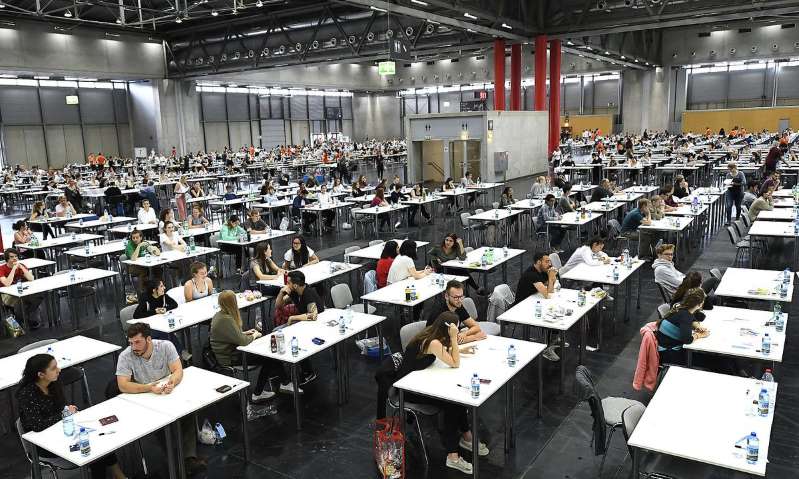
The restrictions on access to universities introduced in 2005 have led to more examination activity in the subjects concerned, but not to more degrees. This is the result of an evaluation by the Institute for Advanced Studies. In studies with a selective admission procedure, such as medicine and veterinary medicine, the number of students from non-academic backgrounds continued to decline, and the number of older students generally fell.
In almost all studies, the introduction of the admission procedure showed a significant increase in the success rates. In most of the studies, the proportion of active students also increased. However: “While the success rates and the proportion of active examination studies increase significantly as a result of the admission procedure, the number of degrees and active examination studies decreased in most studies compared to earlier.” This means that “the assumption that is often expressed that admission procedures with selective tests would not admit those who would not have been successful in any case cannot be confirmed”.
A lower number of degrees with a simultaneously low drop-out rate means that students who were previously successful are no longer accepted today. “Particularly in the fields of study in which admission procedures have been implemented throughout Austria, it can be expected that the number of graduates will be lower in the future than before the introduction of the admission procedure.”
There is no such thing as “the” admission procedure
In its evaluation, the IHS states that “the” admission procedures do not exist, as they differ in terms of their design and thus their effects depending on the degree program. They are, for example, differently selective: in medicine only very few applicants get a place, in other studies practically all of them. In some studies, the number of studies started decreased significantly due to the introduction of admission procedures (medicine, psychology, journalism, economics, architecture, IT), in some studies, however, only slightly (biology, pharmacy) the design of the admission procedure.
Medicine: Fewer students with parents without high school diploma
The IHS is particularly critical of the decline in the number of students from non-academic backgrounds in medicine and veterinary medicine after the introduction of the access restrictions. In medicine, both the number of first-year students with parents without a Matura (from around 30 to 35 percent before the restriction to 20 to 25 percent) and that of graduates with parents without a Matura (from around 30 percent to around 20 percent) fell. Conversely, however, the admission procedures also meant that the success rates did not differ according to the level of parenting – before the introduction of the admission test, academic children studied more successfully than their fellow students from non-academic households.
The Ministry of Education therefore wants to “take a close look” especially in medicine and possibly also in veterinary medicine. “There are effects due to the recording process that are not intended,” they emphasized. The IHS suggests, among other things, that the medical admission procedure should not only consist of a test, but also of elements that serve as study advice and orientation. For example, online self-assessments should be used. In addition, the medical universities should be active on the Internet and social media to counter partial knowledge: “The 'rumor' alone that the MedAT can only be achieved with expensive preparatory courses can deter financially weaker people.”
Decline in older first-year students
The IHS also sees the decline in older first-year students as problematic in almost all studies with admission procedures – regardless of their type. Overall, the average age at the beginning of the studies has fallen by 0.5 years or more in many studies. “Admission procedures are therefore not conducive to a 'life long learning' approach.”
Further effects of the procedure: In computer science, the low proportion of women among first-year students has decreased further (from 24 to 20 percent). And in some studies outside of medicine and veterinary medicine, the proportion of first-year students with parents without an academic degree fell – for example in pharmacy. Limitation: Even when the entry barrier was recently abolished, the proportion remained at the lower level. By the way, the socially most selective course is Business and Economics at the University of Economics: In this (new) course with 240 places there is the lowest proportion from non-academic parents. The proportion from non-academic parents is already the lowest among applicants, at 28 percent – in the course of the admission process, their proportion falls somewhat, namely to 22 percent among first-year students.
Apart from the studies mentioned, the admission procedures did not lead to a major deterioration in the socio-demographic composition of the students.

